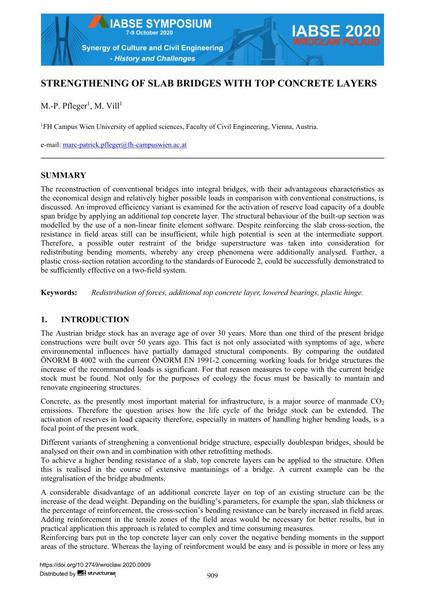Strengthening of Slab Bridges with Top Concrete Layers

|
|
|||||||||||
Détails bibliographiques
| Auteur(s): |
M.-P. Pfleger
M. Vill |
||||
|---|---|---|---|---|---|
| Médium: | papier de conférence | ||||
| Langue(s): | anglais | ||||
| Conférence: | IABSE Symposium: Synergy of Culture and Civil Engineering – History and Challenges, Wrocław, Poland, 7-9 October 2020 | ||||
| Publié dans: | IABSE Symposium Wroclaw 2020 | ||||
|
|||||
| Page(s): | 909-916 | ||||
| Nombre total de pages (du PDF): | 8 | ||||
| Année: | 2020 | ||||
| DOI: | 10.2749/wroclaw.2020.0909 | ||||
| Abstrait: |
The reconstruction of conventional bridges into integral bridges, with their advantageous characteristics as the economical design and relatively higher possible loads in comparison with conventional constructions, is discussed. An improved efficiency variant is examined for the activation of reserve load capacity of a double span bridge by applying an additional top concrete layer. The structural behaviour of the built-up section was modelled by the use of a non-linear finite element software. Despite reinforcing the slab cross-section, the resistance in field areas still can be insufficient, while high potential is seen at the intermediate support. Therefore, a possible outer restraint of the bridge superstructure was taken into consideration for redistributing bending moments, whereby any creep phenomena were additionally analysed. Further, a plastic cross-section rotation according to the standards of Eurocode 2, could be successfully demonstrated to be sufficiently effective on a two-field system. |
||||
